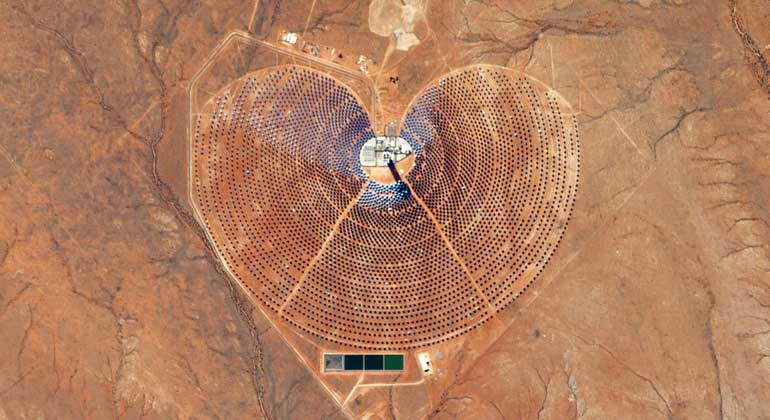When and how is investing in a solar power plant worth it?
Scientists from the German Aerospace Center (Deutsches Zentrum für Luft- und Raumfahrt; DLR), together with partners, have compiled a guide to calculate the yield from a solar power plant.
For the first time, the guideline offers comprehensive and standardised calculation bases within the solar thermal industry that meet the high requirements of project financing. The financing of solar power plants should be easier with the 170-page manual and their construction consequently given a boost. The guideline can now be downloaded from the SolarPACES site.
Easier market entry
Solar power plants or solar thermal power plants concentrate the Sun’s radiation with mirrors and thus generate temperatures of up to 1100 degrees Celsius depending on the technology. Power is generated using this thermal energy by a conventional power plant process. Solar power plants have the advantage that they can supply electricity to the grid for several hours by means of an integrated heat storage unit even during periods of no Sun. This is why they are of great importance in an energy system with a high proportion of fluctuating renewable energy. Compared to a photovoltaic plant, however, the construction of a solar power plant is much more complex and therefore involves different categories of risk for investors. Thus, the decision for or against the financing of a solar thermal power plant requires precise knowledge of the solar resources, the technology, the expected power output and the financial return. In comparison with other renewable technologies such as wind energy or photovoltaics, very different system designs and additional component storage and hybridisation have to be taken into account in solar thermal power plants. The handbook offers new but also experienced market participants a systematic orientation to facilitate the broad market penetration of these power plants as well as to encourage competition. The DLR Institute of Solar Research has developed the guide together with Fraunhofer ISE, Fichtner GmbH & Co. KG, Suntrace GmbH, IA Tech GmbH, the consulting company DNV GL and the Hamm-Lippstadt University of Applied Sciences.
Transparency in the calculation bases
“So far, there have only been reports about the yield from individual power plants. We have now developed a comprehensive guide that also takes the interplay of the various factors into account,” says Tobias Hirsch, who headed the project at the DLR Institute of Solar Research. For example, the handbook provides not only the calculation basis for the receiver of a system, but also the interplay of the entire system, from the receiver to the heat transfer medium, through to the storage and the gas turbine. The handbook is based on the knowledge of experts from various disciplines: “We have discussed our calculation bases intensively at specialist conferences such as SolarPACES with experts from science and industry from the engineering side. On the aspects of the financial decision-makers in close cooperation, we worked with the project partners active in this area,” says Hirsch.
Improving credit conditions
Boris Westphal from the solar consulting company Suntrace is convinced that investors and banks can use the handbook to better assess the risks. “The procedures presented enable a clear reduction in the uncertainties regarding power generation revenues through scientific standardisation specifications.” A precise assessment of the energy yield and thus of future revenues is the essential decision-making base for the financial sector as to whether and under which conditions capital is made available. The handbook introduces standardised procedures with the aim of reducing the usual risk premiums and thus reducing capital costs. “Lower equity return requirements (investor minimum yields, so-called ‘hurdle rates’) and more favourable debt financing conditions can make a decisive contribution to the profitability and competitiveness of solar thermal projects,” says Westphal.








